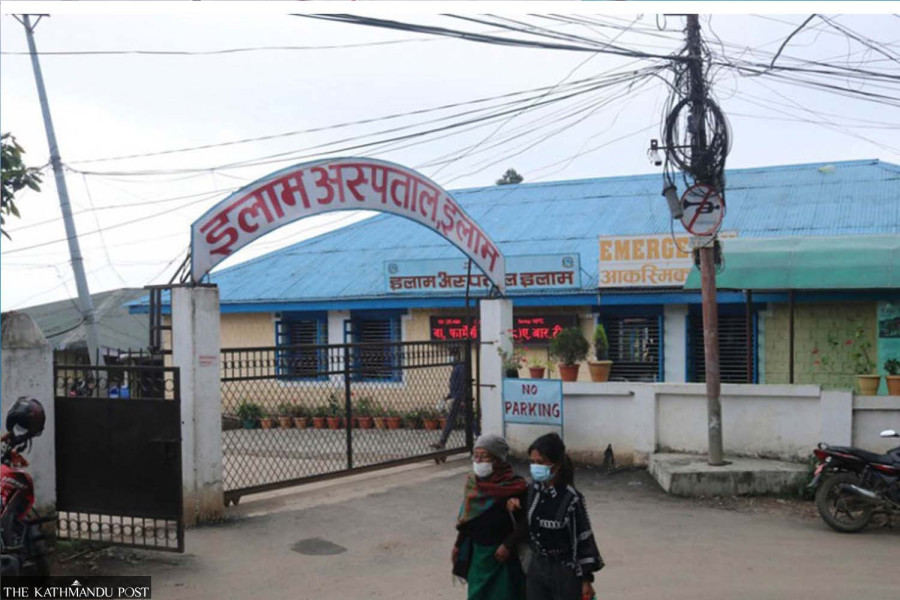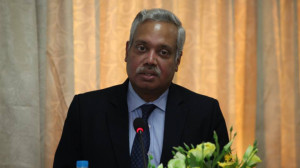National
Hospital-based suicide registry starts at Ilam Hospital
Officials hope the initiative will help in better understanding the causes of suicide and in preparing more effective mitigation measures.
Post Report
The Ministry of Health and Population said that it has started a hospital-based suicide registry at Ilam Hospital.
Officials hope that the move, which is planned to be implemented in all district hospitals throughout the country, will help identify trends and causes of suicide, and ultimately help in formulating policies and mitigation measures.
“We have started the hospital-based suicide registry at Ilam Hospital in the Koshi Province and Mahakali Provincial Hospital in the Sudurpaschim Province,” said Dr Pomawati Thapa, chief of the Mental Health Section at the Epidemiology and Disease Control Division. “Once the registry is implemented in all hospitals across the country, we will get accurate data on suicides, including suicide attempts.”
Nepal is among the countries with the highest suicide rates. The country witnessed an alarming rise in suicide cases in the last fiscal year.
According to data provided by the Nepal Police, 7,223 people killed themselves in the fiscal year 2023-024, which is the highest ever recorded in a year.
Officials say that around 20 people killed themselves on an average every 24 hours in the last fiscal year, and the number is the highest ever recorded in any single year.
Police data show that 6,993 people killed themselves in the fiscal year 2022-023, followed by 6,792 in the fiscal year 2021-022.
As many as 7,117 people took their own lives in the fiscal year 2020-021, during which the country witnessed the second and third wave of the coronavirus pandemic.
Reducing one-third of premature mortality from non-communicable diseases through prevention, treatment and promotion of mental health and well-being is among the UN-backed Sustainable Development Goals (SDGs) targets to which Nepal has committed.
Experts say the suicide rate is an indicator of premature mortality within the SDGs, which are a follow-up to the Millennium Development Goals (MDGs).
In 2015, when Nepal committed to SDGs, around 16 people took their own lives every 24 hours. But, now the number has risen to 20. The government had committed to reducing the suicide rate to 9.7 per 100,000 each year by 2022, but this number rose to 24, and last year it increased further to 25.
The government aims to reduce the suicide rate to 4.7 per 100,000 population by 2030 to meet the SDG targets, but as the deadline nears, more people are killing themselves every day.
Dr Thapa said that the lack of a hospital-based suicide registry has forced them to rely on police data.
Police reports do not include the detailed causes of suicide, nor do they provide information on unsuccessful suicide attempts.
“Hospital-based suicide registration will help in knowing the exact size of the problems and age of the vulnerable population,” said Thapa. “Such information will help us in formulating targeted suicide prevention strategies.”
Thapa, however, admitted that it could take years to expand the programme to all hospitals across the country. When asked why the programme is not implemented in all hospitals across the country, she said that the programme will be expanded gradually from next fiscal year.
Mental health experts say people do not attempt suicide for any single reason, but rather due to a complex mix of factors including the rising cost of living and struggle to manage even their most basic needs such as food, housing, healthcare, and job security.
Regardless of the cause, suicides and suicide attempts have ripple effects, impacting not only the individuals involved but also families, friends, colleagues, communities, and societies.
A study conducted by the Nepal Health Research Council before the start of the Covid pandemic found that more than 10 percent of the adult population had mental issues at some point in their lifetime and 4.3 percent were facing a mental crisis.
The prevalence of suicidality, including current suicidal thoughts, past attempts, and a future likelihood of suicidal thoughts, was found to be prevalent in 7.2 percent of the adult population.
The World Health Organisation says one in four people in the world are affected by mental or neurological disorders at some point in their lives, and around 450 million people currently suffer from such conditions, placing mental disorders among the leading causes of ill health and disability worldwide.
If you or someone you know is considering suicide, please contact the following helplines.
Nepal Mental Hospital suicide hotline: 1166
Tribhuvan University Teaching Hospital suicide prevention hotline: 9840021600:
Patan Hospital crisis helpline for suicide prevention: 9813476123
The Transcultural Psychosocial Organisation: 16600102005




 12.12°C Kathmandu
12.12°C Kathmandu

%20(1).jpg&w=200&height=120)












